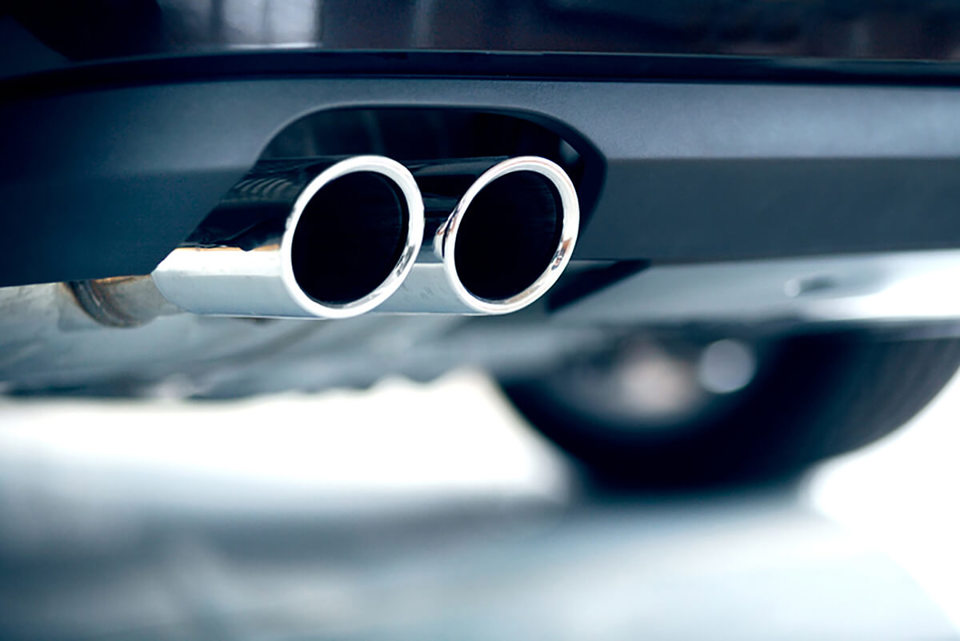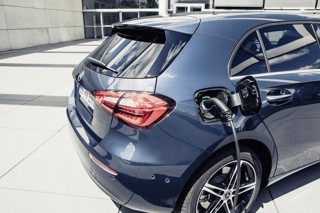Continuing concerns over the environmental credentials of diesel have led to a marked migration to petrol among leased company car fleets.
Increasing fears over fiscal penalties or even restrictions on older diesels entering some cities are persuading drivers to dump the fuel in favour of petrol company cars – although a marked increase in the uptake of hybrids and pure battery EVs has failed to materialise so far.
The latest FN50 data shows little increased uptake of alternatively fuelled vehicles (AFVs) or EVs but highlight a continuing trend towards petrol company cars.
The swing to petrol may also be a contributory factor to the incremental reduction in CO2 emissions as their higher outputs offset improvements in the latest diesel technology.
Any reduction is perhaps a surprise as cars now come under WLTP-based correlated NEDC ratings which are typically 10-20% higher than the old NEDC fuel test scheme.
Consequently, FN50 companies had predicted a year-on-year rise in emissions in the 2018 report, but this hasn’t materialised (they fell 1.2g/km to 115.7g/km), possibly due to the number of companies and drivers that have held onto cars rather than replacing them since the new calculations came into play in September 2018.
With full WLTP – a more accurate testing regime – due to be used for all new car registrations, this year could see an increase in official CO2, even if the actual emissions will have probably fallen.
Certainly, deliveries last year were only marginally below the overall average, at 115.3g/km (down 0.4g/km) – in previous years, they have typically fallen by 3-4g/km.
The migration from diesel to petrol is stark. Of the 1.26 million cars that comprise the FN50 fleet, almost two-fifths (39.7%) were petrol in 2019 – up from less than a third (29.4%) in 2018.
Over the same period, the proportion of diesel cars on the FN50 fleet fell from almost two-thirds (63.4%) to close to half (50.5%).
And, when FN50 fleets were asked about the vehicles they ordered in the past year, the flight from diesel is still more pronounced.
Approaching half of 2019 lease fleet cars ordered were petrol (47.6%) while only two-fifths (38.8%) were diesel.
These figures suggest a sustained shift, but there is very little evidence of increasing demand for electric cars or other AFVs.
Although hybrids (4%) and plug-in hybrids (4.3%) increased their market share a little, the total number of pure EVs actually fell fractionally to 1.5% and orders for all three categories remain broadly flat or in slight decline.
Most analysts attributed flatlining hybrid lease fleet orders to poor availability owing to the new WLTP emissions regime rather than the Government’s decision to pull the plug on grants for Category 2 and 3 hybrids from November 2018, with some predicting a significant increase in uptake of cars like the BMW 330e owing to the clear-cut benefit-in-kind (BIK) savings they offer.
LeasePlan head of consultancy and customer data services Matt Walters said: “Widespread delays caused by WLTP emissions testing have also affected supply, with uncertainty around BIK taxation further compounding the issue.
“We have seen an increase in our clients’ appetite for alternative fuels, with the number of plug-in electric vehicles (PHEVs), hybrids and pure electric vehicles (PEVs) on fleet growing year-on-year.
“The shift to petrol may be due, in part, to consumer misconceptions around EVs, such as cost and range, along with a lack of availability. Many company car drivers may have switched to petrol looking for a mid-term solution.”
Commentators have warned that despite the year-on-year increase in sales of battery electric vehicles (BEVs), the withdrawal of the plug-in car grant (PiCG) – recently suggested by Transport Secretary Grant Shapps – would rapidly reverse this trend.
Ashley Barnett, head of fleet consultancy at Lex Autolease, said the suggestion that the market had reaching a ‘tipping point’ where the momentum towards EVs was unstoppable, was misguided.
“We are talking about 25,000 BEVs out of a total new car market of 1.86 million,” he said. “That is not a tipping point – we are miles away from a tipping point. When sales of BEVs reach 20% plus, then maybe that’s a tipping point. But the danger is that the Government will pick up on these headlines and withdraw the grants – just like it did with PHEVs.
“EVs continue to be much more expensive than their ICE (internal combustion engine) equivalents and until we reach something like price parity, the market is going to need that £3,500 PiCG incentive to persuade them to make the shift.”
If the Government withdraws the PiCG completely – as Denmark did in 2016 – experts predict a similar fate for the nascent EV boom. EV sales in Denmark plummeted from 5,000 in 2015 to just 700 in 2017.
Arval fleet consultant David Watts said: “EVs have yet to make a real impact in fleet for two main reasons: the more popular models are at the high end of the price spectrum and are only affordable to senior staff while the more affordable models are either less suitable from a traditional company car perspective or have extremely limited supply.
“The new 0% BIK for EVs from April 2020 has focused attention on these vehicles and, as availability of a wider range of models improves across a wider range of price points, we expect take-up to improve substantially.”
Watts also predicts a shift back to diesel in the medium term.
“Currently, petrol cars are more attractive in tax terms due to a combination of the 4% diesel tax supplement, lower P11D values for petrol models and the narrowing of the CO2 variance between petrol and diesel models,” he said.
“However, the gradual removal of the 4% tax supplement, as diesel models achieve RDE2 compliance over the next 18 months, will significantly impact the tax comparison of equivalent petrol and diesel models.
“Our view is that there will probably be a shift back towards diesel, although not to the levels previously seen.”
While incremental reductions in average CO2 emissions are consistent with a shift back to petrol cars, some analysts attribute the flatlining figures to other factors – such as the accelerating trend away from traditional company cars in favour of affinity schemes and personal contract hire.
Watts said: “A key point to consider when it comes to CO2 emissions and take up of alternative fuels is the growth of affinity and other employee leasing schemes alongside greater PCH take-up in SMEs.
“These remove the BIK factor from car choice and potentially bring others into play. The impact can vary dramatically – a corporate affinity scheme might be constructed around only offering cars that meet a well-rounded set of environmental metrics while, in other scenarios, there might be almost no consideration given to this area. How this plays out over time is yet to become clear.”
Barnett from Lex Autolease raises similar concerns. “A decade ago, a company director might accept an efficient diesel Mercedes or BMW executive model as their company car, but now, if they decide they want a big SUV, they are more likely to take salary sacrifice or a cash alternative because they won’t pay any BIK if they opt out of the traditional car scheme,” he said.
“In general, the trend away from corporate car schemes, which often imposed CO2 caps on choice lists, to a more consumer-driven market, where drivers use PCH schemes to buy less efficient vehicles like SUVs, could see average CO2 rates rising again.
“And it’s also worth bearing in mind that as we move from NEDC to WLTP reporting, average CO2 emissions are likely to rise across the board.”



















Login to comment
Comments
No comments have been made yet.